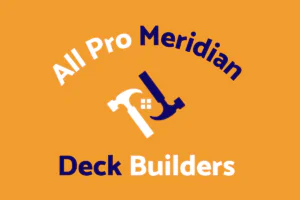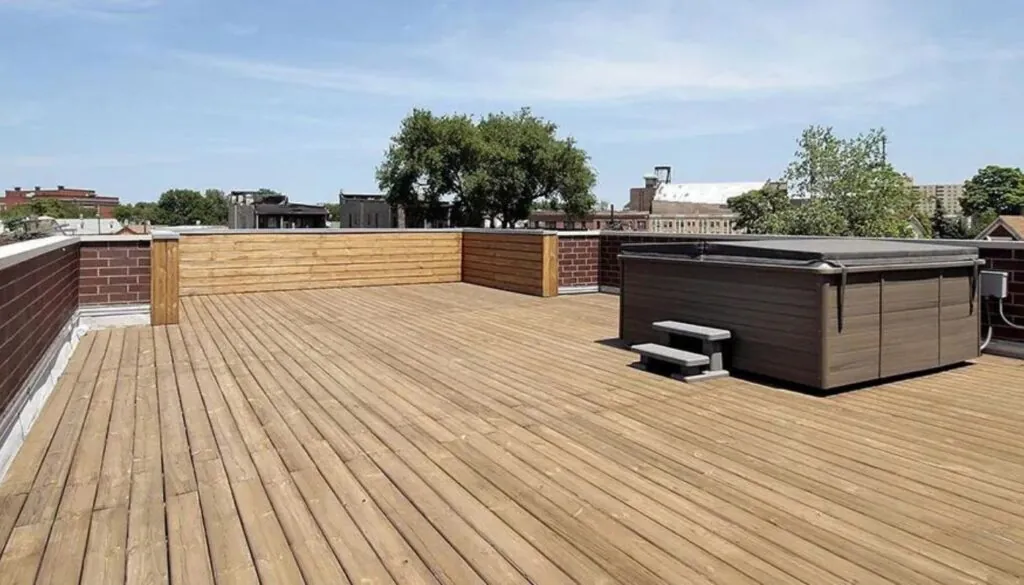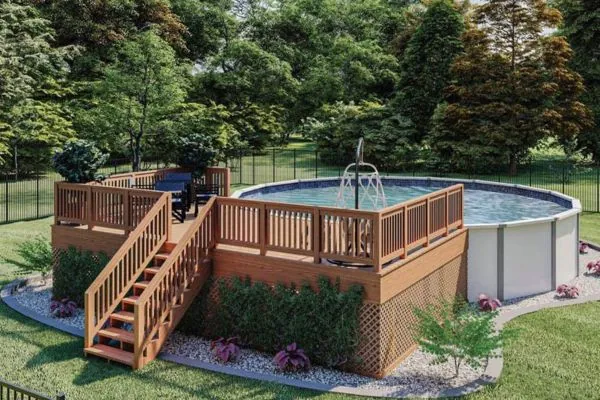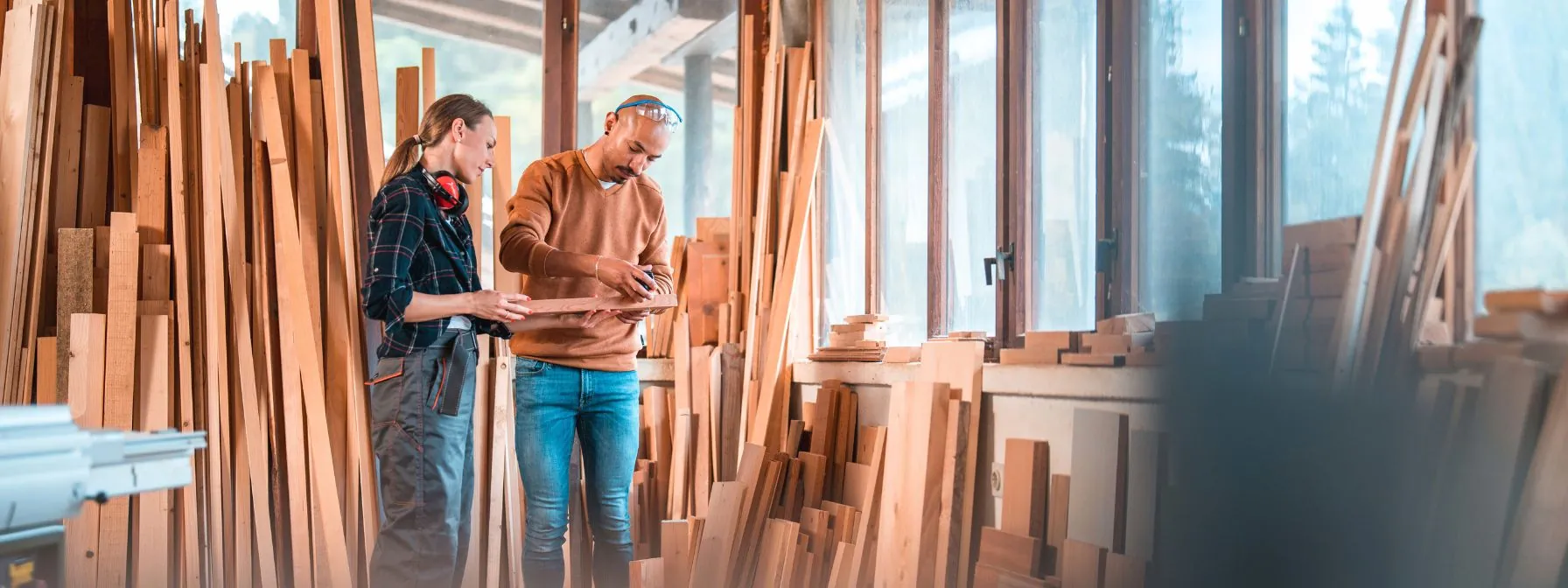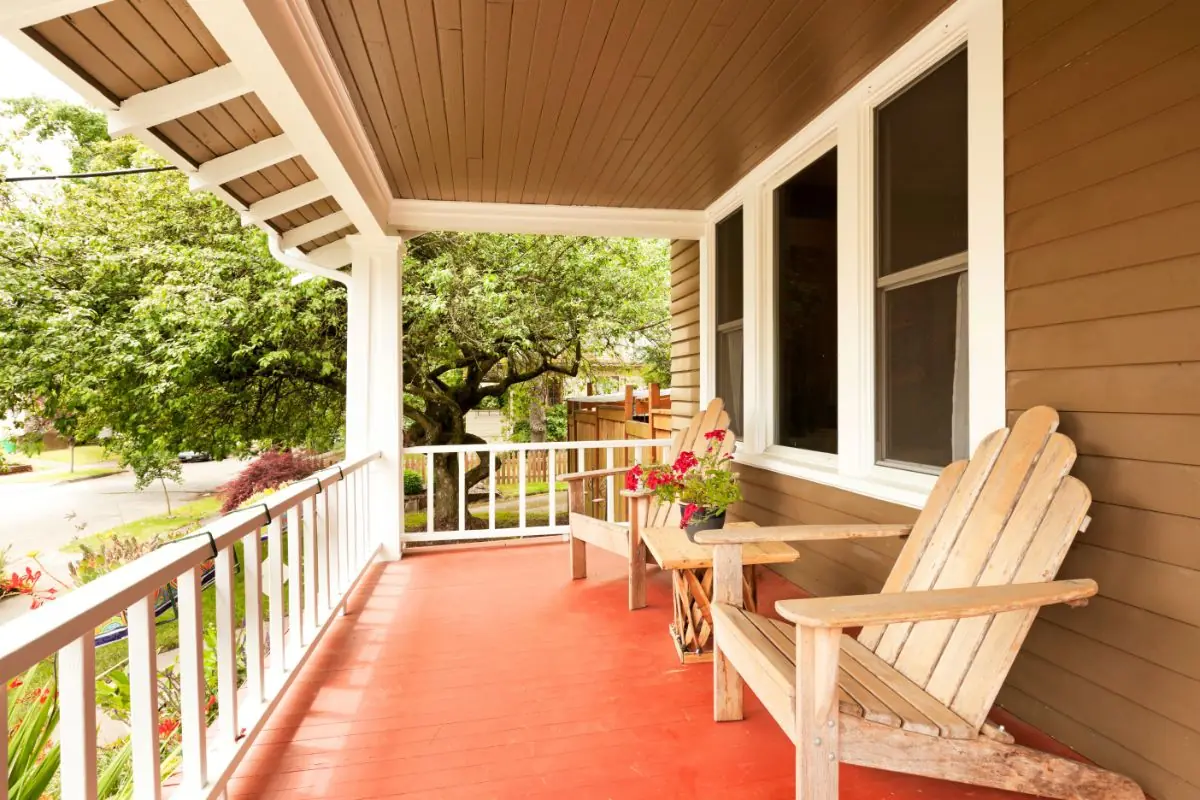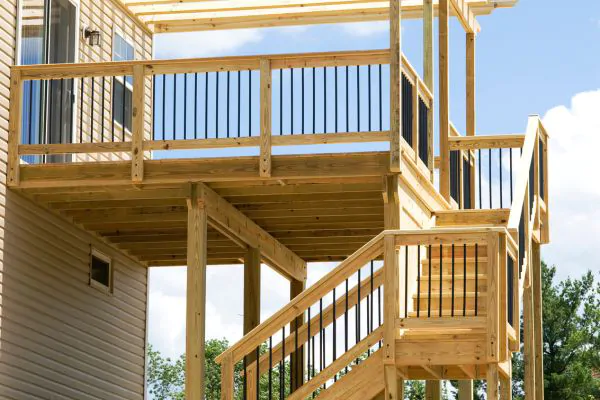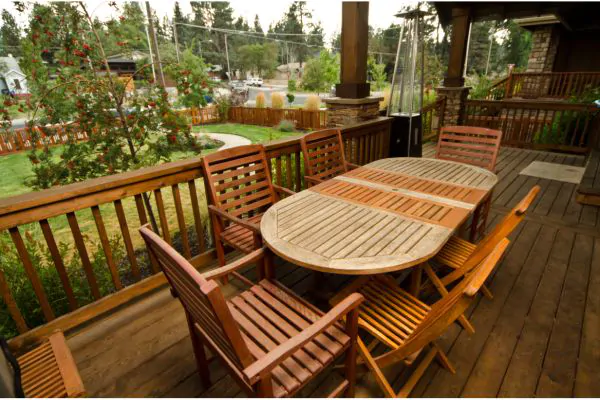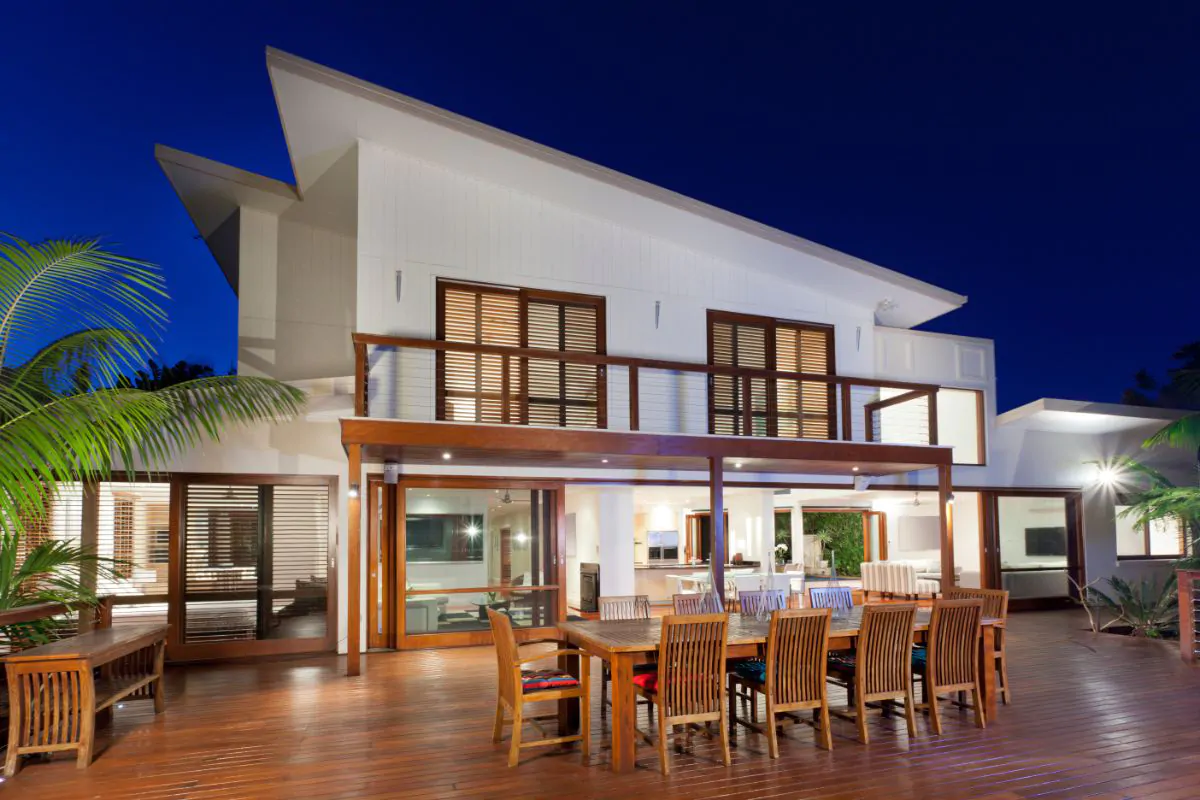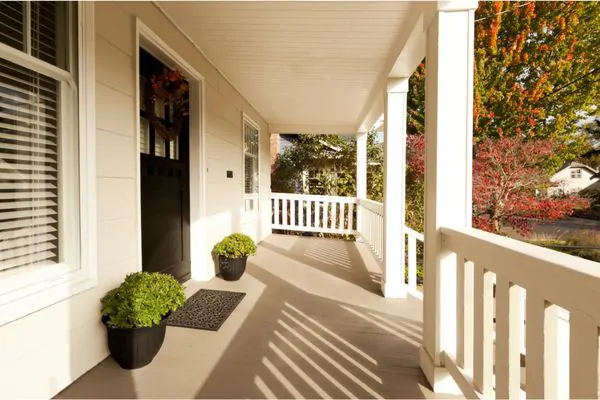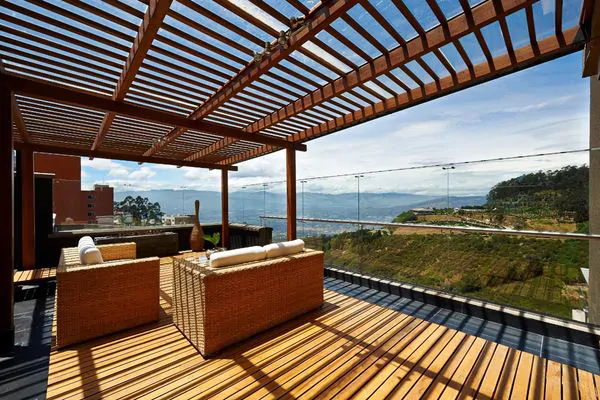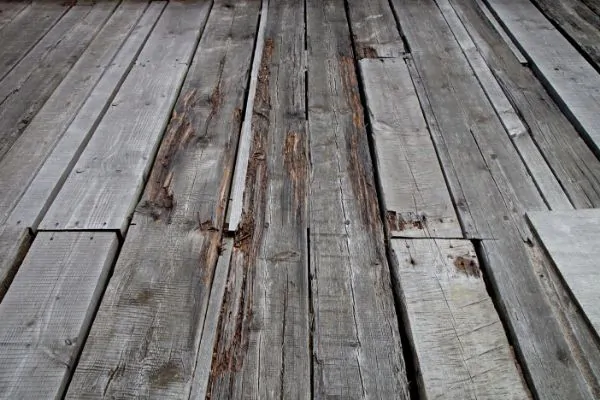Building a roof deck combines the benefits of outdoor living with the comfort of your home. It involves several key steps, from initial planning to the final installation. For homeowners interested in adding a deck over their roof, it is more than just gaining extra space, it’s about enhancing your living experience with new views and a refreshed environment.
This process requires detailed planning, a well-thought-out strategy, and strict adherence to safety standards. Continue reading for a straightforward guide that provides clear instructions for roof deck construction.
I. Initial Considerations for Building a Roof Deck
Before starting your roof deck construction project, addressing key factors like planning, safety, and structural requirements is crucial. Proper preparation will help ensure a smooth and successful installation.

Check Local Building Codes and HOA Regulations
Understanding local building codes is crucial for your roof deck project. These codes outline requirements for structural integrity, safety, drainage, and construction practices to ensure your deck is safe and compliant. Consult city or county guidelines for specifics like load limits and waterproofing.
Equally important is checking HOA regulations. These residential groups often have rules about external changes, which can lead to fines. Ensure your deck design meets HOA water management and aesthetics standards to avoid conflicts with neighbors and the community.
Assess Roof Type and Accessibility
The type of roof you are building on affects the feasibility and safety of your deck. Consult an architect to ensure the roof can support the deck’s weight and withstand local weather conditions, like heavy snow. According to building codes, the roof must handle static and dynamic stresses.
Accessibility is also key: plan for safe and convenient access for both construction and future use. Ensure the design allows for easy entry and exit while meeting building codes and safety concerns. This is a vital part of deciding if your roof is suitable for a deck and maintaining its safety and functionality.
II. Planning Your Roof Deck
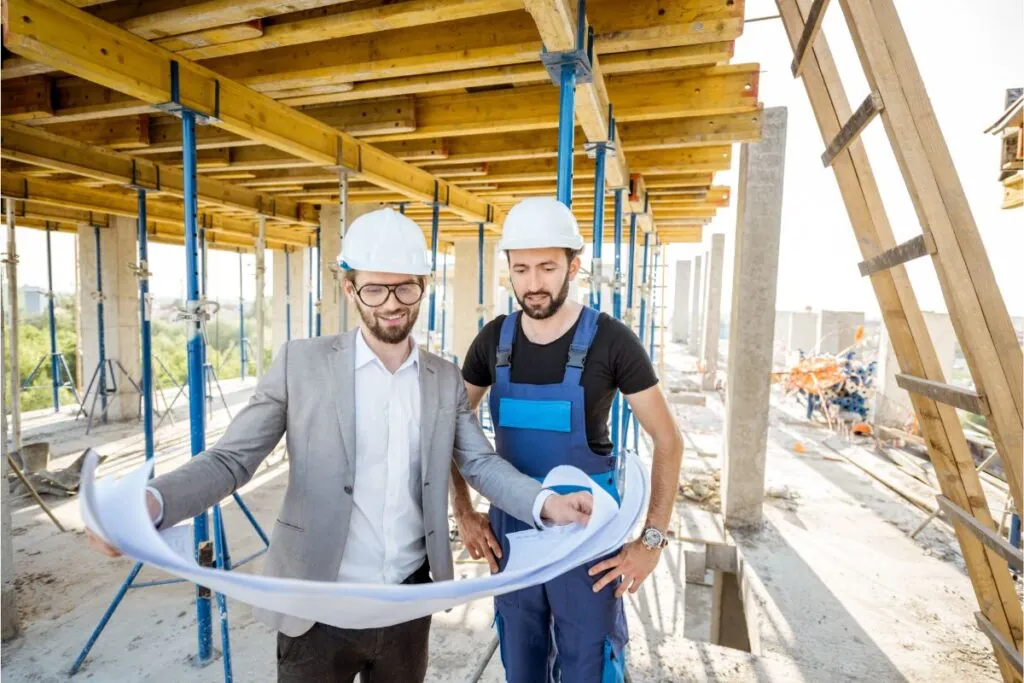
After covering the basics, focus on planning your roof deck. This involves selecting the right deck design and installation. Consult a professional roofer for advice on durable, practical solutions for your project.
Choose the Right Design
Selecting the right design starts with evaluating the roof’s surface. A robust waterproof membrane is essential to protect the roof, and your design must work with this layer without compromising it. Features like pergolas should be planned carefully to avoid damaging the membrane.
Material choices are crucial for both function and aesthetics. Hardwood is durable and visually appealing, but alternatives like plywood or oriented strand board can be used for cost-effective subflooring. Ensure all materials are suitable for outdoor use and weather-resistant.
Select Materials Based on Climate and Durability
When choosing materials for your roof deck, focus on their ability to withstand local climate conditions and their overall durability. Materials should not only look good but also effectively handle weather changes.
For example, certain woods are better suited for humid environments. Consulting an engineer can help you select materials that meet design and structural needs. Ensuring that materials can handle foot traffic and environmental stresses will extend the life of your deck and maintain its functionality.
III. Construction Steps for a Roof Deck
Construction of a roof deck involves a series of critical tasks that ensure stability, safety, and functionality. Proper execution is key to transforming your design into a lasting, enjoyable outdoor space.

Prepare the Roof Surface
Proper roof surface preparation is crucial before constructing a deck. Experienced contractors evaluate the roof’s condition to ensure it meets zoning regulations and can handle the deck’s weight. They check for imperfections, primarily if the deck will rest on concrete, which can cause water pooling and damage. A well-prepared surface is essential for the deck’s stability and helps maintain the deck’s warranty, safeguarding the homeowner’s investment and preventing future issues.
Install Sill Plates and Support Beams
Installing sill plates and support beams is essential for a stable roof deck. After a structural engineer approves sill plates, using appropriate fasteners to ensure stability, are attached to the building. Support beams are placed on these plates, requiring precise alignment for maximum support. This foundational setup is crucial for creating a durable and safe deck platform, ensuring the structure remains solid and secure throughout use.
Set Up Joists and Framing
With base supports in place, install joists to form the deck’s framework. Joists distribute weight across beams or walls, preventing stress that could cause leaks. Accurate joist placement is vital for supporting future deck amenities. Additionally, framing with rafters provides a support grid for elements like raised flooring. Properly installed joists and rafters ensure the deck is stable, structurally sound, and ready for further construction and finishing.
Install Railings and Shade Options
Installing railings on a roof deck is necessary for safety, preventing falls, and defining the space. Ensure the railings are compatible with the underlying roofing to avoid damage. Adding shade options enhances comfort by providing protection from the sun and improving ventilation. Securely anchor these features to the supporting beams to maintain the roof’s integrity and contribute to the overall strength and usability of the deck.
Decorate with Outdoor Furniture and Plants
Outfit the deck with outdoor furniture that fits the roof’s weight capacity and is moisture-resistant to prevent water damage. Carefully select lightweight, outdoor-ready planters to add greenery without overloading the deck. Proper furniture and plant choices enhance the deck’s aesthetics and functionality while ensuring the structure remains safe and in good condition. Avoid excess weight and moisture to protect the deck and the building’s integrity.
IV. Maintenance and Care

Regular maintenance is crucial for extending the life of your roof deck. It involves routine inspections, cleaning, and prompt repairs to address wear and potential damage. Following warranty guidelines and building codes ensures the deck remains in good condition and continues to serve as a functional outdoor space.
Regular Cleaning and Inspection
Regular roof deck cleaning and inspection are essential for maintaining its condition—clear debris like leaves and branches to prevent water damage and mold growth. Check for signs of wear, such as loose boards or rusted fasteners, and address issues promptly. Routine inspections help identify and fix minor problems before they worsen, ensuring the deck remains safe and functional. Being responsible with upkeep and deck care helps maintain the deck’s appearance and longevity, ensuring the entire family can enjoy it all season long.
Seasonal Maintenance Tips
Seasonal maintenance is vital to preserving your roof deck’s condition. In summer, inspect the deck for sun damage and check that outdoor lighting and railings are secure. In winter, look for ice buildup and ensure drainage systems are transparent. Extreme temperatures can affect decking materials like PVC, so check for warping or discoloration. Address any issues promptly and keep your contractor’s contact information handy for emergency repairs. Seasonal upkeep helps protect the deck from environmental damage and ensures its continued usability.
V. Hire a Local Deck Professional for your Roof Deck
Hiring a local deck professional is essential for a successful roof deck construction project. They offer expert knowledge on how to build a roof deck and choose a design, material selection, and permit requirements. It ensures a smooth process from start to finish. Local contractors can advise incorporating eco-friendly practices and proper plant selection to enhance aesthetics and functionality.
The local construction and design pros provide valuable information on maintenance, including care for metal components, to ensure the deck’s longevity. Choosing skilled local professional helps prevent costly errors and ensures the structural integrity of your roof deck, providing peace of mind and a quality final product.
Conclusion
Building a roof deck requires careful planning and adherence to building codes. Selecting durable materials suited to the local climate is essential for long-term performance. Proper roof deck installation foundational elements, such as sill plates and joists, ensure stability while adding safety features like railings to improve functionality.
Regular maintenance helps maintain the deck’s integrity and appearance over time. Hiring a local deck professional to build a deck over a roof offers expert guidance through every project stage, ensuring a high-quality, durable outdoor space that meets all safety and construction standards.
Get started today and get a roof deck that is just right for your family!
